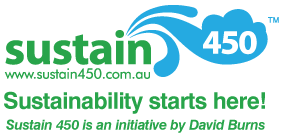
Welcome
David Burns is an environmental chemist with expertise in laboratory data audits, green chemistry, and industrial ecology. David is available to help business & professionals integrate sustainable supply chains and energy efficiency into service offerings. The following blog topics are intended to invoke awareness and/ or action in Going-Green. You are also invited to create a Free Whoisgreen business profile using the link above. David Burns is a NSC member of the Rocky Mountain Institute.
1. BIODIVERSITY - prioritise native landscapes that restore indigenous habitat, and attract/ protect local wildlife.
How ?
1. Mass planting of indigenous tube stock/ nursery grown native plants (low water and maintenance).
2. Select natives that flower & seed year round (food for wildlife & visual stimulants for gardeners).
3. Introduce water element to attract native wildlife.
4. Avoid pesticides. Apply compost and worm wee to keep landscape healthy.
2. WATER - is an essential resource for all living things. Water efficiency & harvesting shall be prioritised, not wasted.
How ?
1. Select water efficient appliances with high star ratings (ie. smart flush toilets, washing machine, dish washer,
kitchen tap with trigger handle, shower-heads & taps).
2. Flush toilets with treted greywater/ rainwater.
3. Water garden with rainwater. No turf, swales and 50-100mm mulch to trap surfae water/ ratain soil moisture.
4. Drinking water is supplied by water authority (health priority: high cost to capture, treat, distribute).
3. ENERGY - live within our natural solar budget for electricity & heating needs.
How ?
1. Monitor efficient energy consumption, then match with renewables (photovoltaic grid-connect solar electricity).
2. Maximise cross ventilation using lourves, ceiling fans, thermal mass (concrete floors and 30% walls).
3. Insulate roof, walls, and floorspaces with correct R-ratings. Maximise external wall shading with large eaves.
4. Heat home with hydronic floor heating (gas - solar thermal boosted).
4. HOME DESIGN - assign an expert who can make the space become our preferred place to share with friends & famiy.
How ?
1. Sustainable home must be <250/280m2, and integrate natural landscape elements.
2. Plan lifestyle areas that connect inside & outside areas.
3. Use ceiling height to create the illusion of space.
4. Utilise natural light and solar access.
5. BUILDING MATERIALS - prioritise recycling & reuse. Avoid harmful chemicals.
How ?
1. Avoid copper, chromium, arsenic (CCA) treated timbers.
2. Reuse of origan & hardwood timbers for decking frame work and western screening element.
3. Sourcing of seconds appliances & fittings, for example: oven & garage door.
4. Excuvated sandstone rubble used in water wise garden beds (sandstone is a natural moisture retainer).
6. MONITORING - good choices are founded by measurement, and provide an opportunity to save.
How ?
1. All utilities shall be monitored in real time to provide accurate consumption data (electricty, water, gas).

